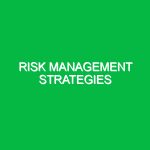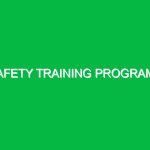Understanding Industrial Hygiene Practices
Industrial Hygiene Practices are essential components of the Health, Safety, and Environment (HSE) domain that focus on the identification, evaluation, and control of workplace hazards that may adversely affect employee health and safety. This discipline aims to protect workers from a variety of physical, chemical, biological, and ergonomic hazards. In an era where employee well-being is paramount, the relevance of Industrial Hygiene cannot be overstated. Implementing these practices not only safeguards the health of workers but also enhances productivity and fosters a positive workplace culture.
Imagine walking into a factory bustling with activity. The air is filled with the sounds of machinery, and workers are diligently fulfilling their tasks. However, lurking within this environment are potential hazards—chemical spills, excessive noise, or ergonomic risks—that could compromise the health of these workers. This is where Industrial Hygiene Practices step in, creating a bridge between operational efficiency and employee well-being.
Identifying Hazards and Risks
To effectively implement Industrial Hygiene Practices, one must first identify the hazards present in the workplace. Various types of hazards can be found in industrial settings, including:
Chemical Hazards
Chemical hazards encompass a broad range of substances that can cause health issues upon exposure. For instance, workers handling solvents may face respiratory problems or skin irritations. A notable case occurred in a manufacturing plant where improper storage of hazardous chemicals led to an accidental release. Several employees suffered from chemical burns, leading to both medical expenses and operational downtime.
Physical Hazards
Physical hazards include noise, radiation, temperature extremes, and vibration. A classic example is the high decibel levels in a construction site. Prolonged exposure to such noise can lead to permanent hearing loss. According to the Centers for Disease Control and Prevention (CDC), approximately 22 million Americans are exposed to hazardous noise levels at work each year.
Biological Hazards
Biological hazards are associated with exposure to harmful bacteria, viruses, or other microorganisms. In healthcare settings, for example, hospital workers may encounter bloodborne pathogens. During a flu outbreak, a hospital implemented strict hygiene protocols, including the use of personal protective equipment (PPE) and enhanced sanitation measures, significantly reducing infection rates among staff.
Ergonomic Hazards
Ergonomic hazards arise from the physical demands of a job, such as repetitive motions or improper lifting techniques. These hazards often lead to musculoskeletal disorders. A personal anecdote from my years in the manufacturing sector highlights this risk: a colleague developed severe back pain due to improper lifting practices, ultimately requiring surgery. This incident reinforced the need for ergonomic training and awareness among workers.
Safety Precautions and Best Practices
Once hazards are identified, the next step is to implement safety precautions. Here are some of the best practices related to Industrial Hygiene:
Regular Risk Assessments
Conducting regular risk assessments is vital in identifying potential hazards before they result in incidents. This involves evaluating work processes, equipment, and materials to ensure that all risks are accounted for. A systematic approach, such as the Hierarchy of Controls, can be employed, which prioritizes eliminating hazards at the source before considering personal protective equipment.
Implementing Engineering Controls
Engineering controls are physical modifications to the workplace that help reduce exposure to hazards. For instance, installing ventilation systems can mitigate chemical exposures, while noise barriers can protect workers from excessive sound levels. A manufacturing plant that implemented local exhaust ventilation for welding operations reported a significant decrease in respiratory issues among workers.
Providing Personal Protective Equipment (PPE)
PPE serves as the last line of defense against hazards. Employers must ensure that workers are provided with appropriate gear, such as gloves, goggles, masks, and hearing protection. A story from a construction site illustrates this point: following a serious incident where a worker suffered eye injuries, the site manager instituted mandatory safety goggles for all personnel, drastically reducing similar occurrences.
Training and Awareness Programs
Education is key in promoting Industrial Hygiene Practices. Regular training programs help workers understand the hazards they may encounter and the importance of following safety protocols. Real-world simulations or drills can enhance engagement and retention of safety information. For instance, a mining company that conducted annual safety drills saw a marked improvement in employee preparedness during actual emergencies.
Promoting a Safety Culture
Creating a culture of safety within an organization encourages employees to prioritize their well-being. This involves leadership commitment to safety, open communication about hazards, and recognition of safe practices. A personal reflection from my experience in a corporate setting emphasizes this: when leadership actively participated in safety initiatives, employee engagement and adherence to safety measures significantly improved.
Regulations and Standards Governing Industrial Hygiene Practices
Several regulations and standards govern Industrial Hygiene Practices, ensuring that workplaces maintain adequate safety measures. Key regulations include:
Occupational Safety and Health Administration (OSHA) Standards
OSHA sets forth regulations that require employers to identify and mitigate workplace hazards. Specific standards, such as the Hazard Communication Standard (HCS), mandate that employers inform employees about hazardous chemicals they may encounter.
American National Standards Institute (ANSI) Guidelines
ANSI provides guidelines that outline best practices for various industries. These guidelines cover topics like noise exposure and chemical safety, helping organizations develop sound Industrial Hygiene programs.
National Institute for Occupational Safety and Health (NIOSH) Recommendations
NIOSH conducts research and makes recommendations to prevent workplace-related injuries and illnesses. Their resources offer valuable insights into best practices for various industries, emphasizing the importance of ongoing education and training.
Conclusion
In conclusion, Industrial Hygiene Practices play a crucial role in the Health, Safety, and Environment domain. By identifying hazards, implementing safety precautions, and adhering to regulations, organizations can create safer work environments. The stories and examples shared throughout this article illustrate the profound impact that effective Industrial Hygiene can have on employee health and organizational success.
As industries continue to evolve, so must our approach to safety and health. A commitment to continuous improvement in Industrial Hygiene Practices will not only protect workers but also contribute to a more sustainable future for all. Embracing these practices is not just a regulatory requirement; it is a moral obligation that every organization should uphold.


